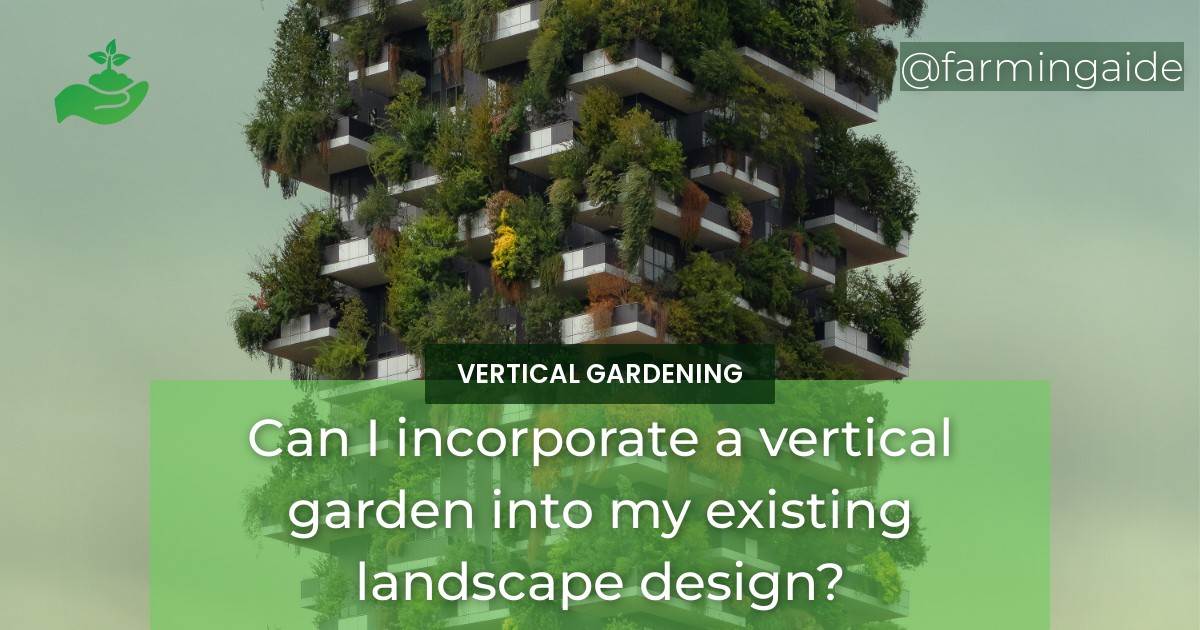Integrating a vertical garden into an existing landscape design can add a unique and stunning touch to any outdoor space. Whether you have a small balcony or a large backyard, incorporating vertical gardening can create a lush and vibrant oasis. However, it can be overwhelming to start, especially if you are unsure of how to blend your vertical garden with your current landscape.
This article will provide tips and tricks on how to seamlessly incorporate a vertical garden into your existing landscape design.
Table of Contents
Integrating Vertical Gardens with Other Garden Elements
Assessing Your Existing Landscape Design
Before starting a vertical garden, assess your existing landscape design. Take note of the colors, textures, and shapes of your plants. Determine which areas could use more greenery and which areas may be overcrowded. This will help you determine the best location for your vertical garden.
Finding the Perfect Location for Your Vertical Garden
Finding the ideal location for your vertical garden is crucial. Consider the amount of sunlight and shade the area receives. If you have limited space, consider using walls or fences as an opportunity for vertical gardening.
Choosing the Right Plants for Your Vertical Garden
Selecting the right plants is essential for the success of your vertical garden. Choose plants that are well-suited for vertical gardening, with compact root systems and sturdy stems. Some great options include herbs, succulents, and ferns.
Creating a Cohesive Look with Your Existing Garden Elements
When choosing plants for your vertical garden, consider the colors and textures that will complement your existing garden elements. This will help create a cohesive look between your vertical garden and the rest of your landscape.
ALSO READ
Balancing Aesthetics and Functionality
Choosing the Right Structure for Your Vertical Garden
Choosing the right structure for your vertical garden is essential. Options include trellises, shelves, and planters. Consider the aesthetic appeal, size, and durability of the structure.
Incorporating Watering and Drainage Systems
Adequate watering and drainage systems are crucial for a successful vertical garden. Consider using irrigation systems or self-watering planters. Ensure proper drainage to prevent water damage to your walls or fences.
Ensuring Accessibility and Maintenance
Ensure that your vertical garden is accessible for maintenance and upkeep. Consider the height of your garden and the difficulty of accessing it for pruning or watering.
Harmonizing Vertical Structures with the Surroundings
Considering Your Home’s Architecture and Style
When designing your vertical garden, consider the architecture and style of your home. This will help create a seamless transition between your vertical garden and the rest of your landscape.
Making Use of Existing Structures
Making use of existing structures, such as walls or fences, can help integrate your vertical garden into your landscape.
Tying in Vertical Elements with the Rest of Your Landscape Design
Incorporating vertical elements, such as trellises or archways, can help tie in your vertical garden with the rest of your landscape design.
Conclusion
Summary of Key Points
Integrating a vertical garden with your existing landscape design requires careful consideration of location, plant selection, and structure. Balancing functionality with aesthetics and harmonizing with the surrounding landscape will create a cohesive and stunning outdoor space.
Final Thoughts and Tips for a Successful Integration
Remember to regularly maintain your vertical garden, including proper watering and pruning. Consider consulting with a landscaping professional for additional tips and ideas. With careful planning and design, a vertical garden can elevate any outdoor space.
RELATED ARTICLES:


